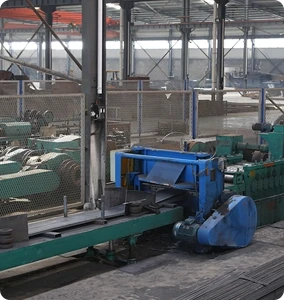Chain Link Fence Replacement A Comprehensive Guide
Chain link fences are popular for their durability, strength, and cost-effectiveness. However, like any other type of fence, they can degrade over time due to exposure to the elements, rust, and wear and tear. If you find yourself looking at a deteriorating chain link fence, it may be time for a replacement. Here’s a comprehensive guide to help you through the process.
Assessing Your Current Fence
Before diving into replacement, it's essential to assess the condition of your existing fence. Look for signs of damage such as rusted links, broken posts, or leaning sections. If the damage is localized, you might consider repairing rather than replacing. However, if the fence is severely damaged or older than ten years, replacement is likely the better option.
Planning Your Replacement
Before installation, plan your replacement carefully. Determine the purpose of your fence—whether it's for security, privacy, or to keep pets in. Measure the area accurately to ensure you purchase the appropriate materials. You will need chain link fabric, posts, top rails, and various fittings like ties, tension bands, and gates.
Choosing the Right Materials
When selecting materials, consider the gauge of the chain link fabric. A lower gauge number means thicker and stronger material. For residential areas, 11 or 12 gauge is generally sufficient. Additionally, consider the height of your fence; standard heights range from 4 to 6 feet, but customs heights can be ordered depending on your needs.
You will also need to choose coatings. Galvanized steel is the most common to prevent rust, but you can also opt for vinyl-coated chain link for added protection and aesthetic appeal.
chain link fence replacement

Removing the Old Fence
To replace a chain link fence, the first step is the removal of the old one. Start by removing any accessories, such as gates and hinges. Then, carefully take down the fencing material, ensuring not to damage any surrounding landscape. Remove the posts by digging around the base or using a post puller. It’s essential to dispose of the old materials responsibly, recycling where possible.
Installing the New Fence
Begin by marking the layout for your new fence. Use stakes and string to outline the desired perimeter. Next, install the new posts, ensuring they are set deep into the ground—typically at least one-third of their length—to provide stability. Once the posts are in place, attach the top rail and then unroll and attach the chain link fabric. Fasten everything securely using the provided fittings.
Finishing Touches
Once the fence is up, install any gates and locking mechanisms for added security. Take time to clean up the surrounding area, removing any debris from the installation process.
Finally, consider applying a protective coating if you opted for raw galvanized steel to extend its lifespan.
Conclusion
Replacing a chain link fence may seem daunting, but with careful planning and execution, it can be a manageable DIY project. Investing time and effort into your fence not only enhances your property's security and aesthetics but also increases its overall value.
-
Versatility of Expanded Aluminum Metal for Various Applications
NewsMay.19,2025
-
The Geometry of Steel Gratings: Why It Matters
NewsMay.19,2025
-
Reinforcement Applications of Perforated Mesh in Masonry
NewsMay.19,2025
-
Essential Tools for Installing a Deck Mesh Railing
NewsMay.19,2025
-
Anti-Slip Flooring Made with Stainless Expanded Mesh
NewsMay.19,2025
-
Adjustable Steel Grating for Uneven Terrain
NewsMay.19,2025
Subscribe now!
Stay up to date with the latest on Fry Steeland industry news.

